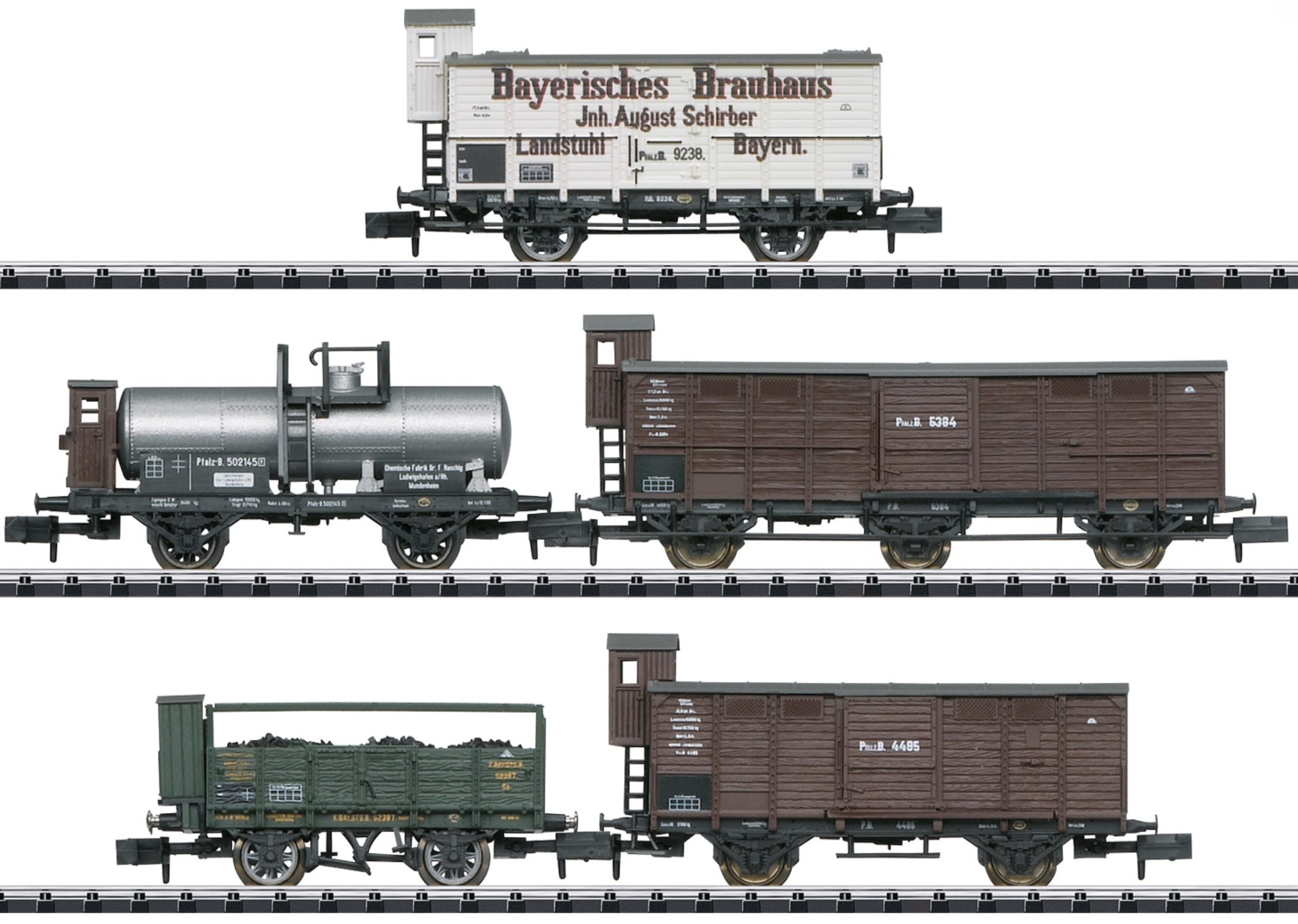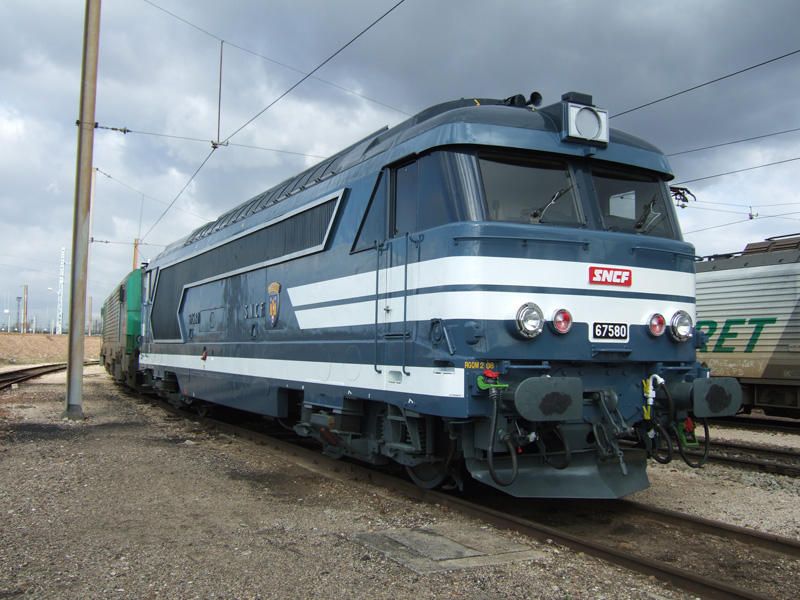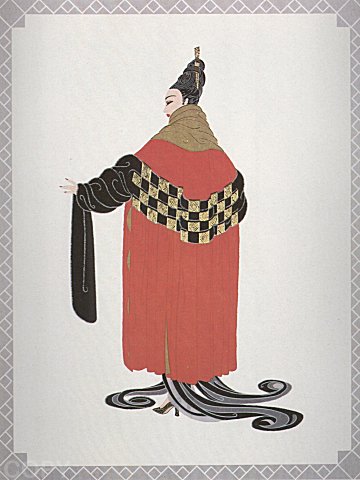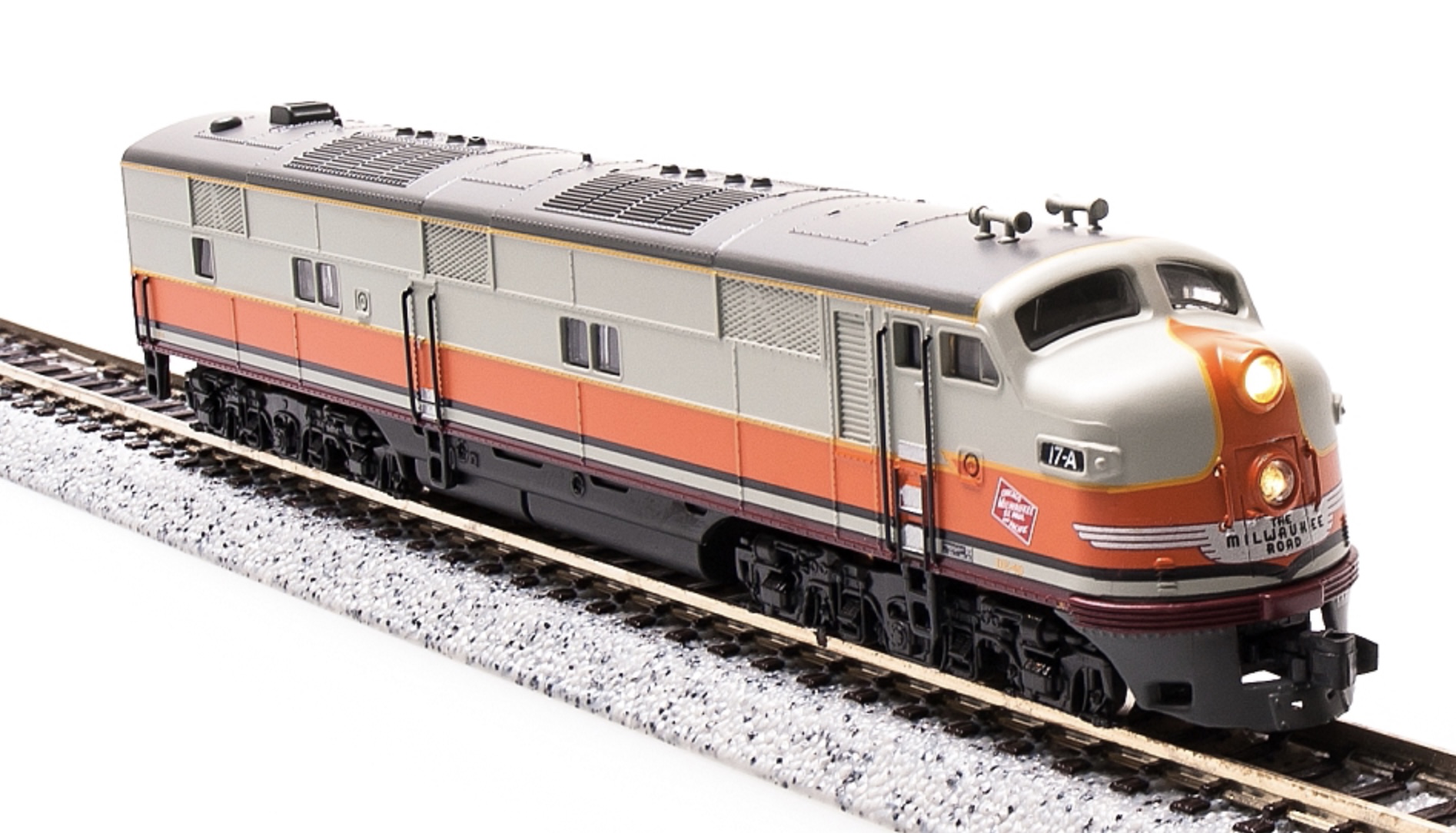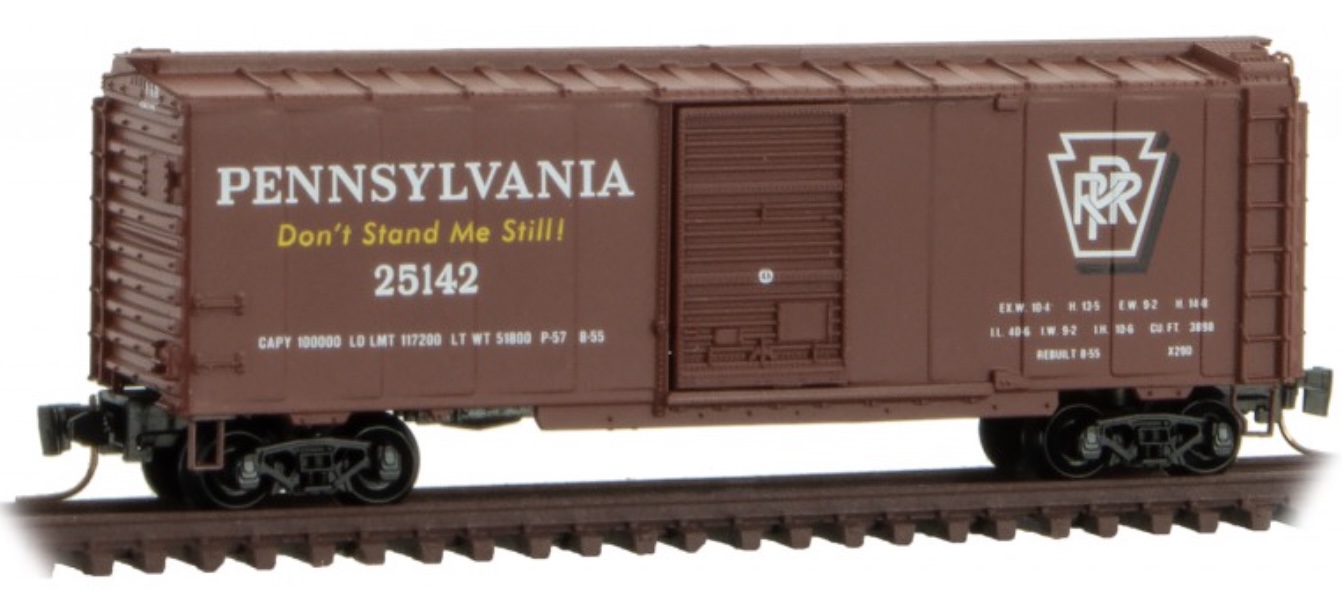Specific Item Information: One (1) beer refrigerator car with a brakeman's cab, one (1) tank car, one (1) type Nml boxcar, one (1) type Oq gondola, and one (1) type Gm boxcar, painted and lettered for the Palatinate Railroad and the Royal Bavarian State Railways (K.Bay.Sts.B.).
Road Name History: 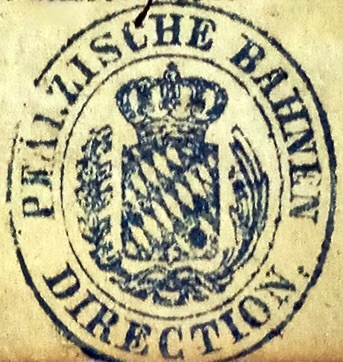 The Palatine Railways (German: Pfälzische Eisenbahnen), often abbreviated to Palatinate Railway (Pfalzbahn) was the name of the railway division and administration responsible for all private railway companies in the Bavarian Palatinate from 1844 to 1908. The railway division was first located in the provincial capital of Speyer and later relocated to Ludwigshafen am Rhein.
The Palatine Railways (German: Pfälzische Eisenbahnen), often abbreviated to Palatinate Railway (Pfalzbahn) was the name of the railway division and administration responsible for all private railway companies in the Bavarian Palatinate from 1844 to 1908. The railway division was first located in the provincial capital of Speyer and later relocated to Ludwigshafen am Rhein.
The company was inaugurated with the construction of the Palatine Ludwig Railway (Pfälzische Ludwigsbahn) by the eponymous railway company. On the completion of the Palatine Maximilian Railway (Pfälzische Maximiliansbahn) the operational headquarters and management of the Palatine Maximilian Railway Company was also incorporated. In 1862, it was joined by the Neustadt - Dürkheim Railway Company (Neustadt-Dürkheimer Eisenbahn-Gesellschaft). The same happened to the Palatine Northern Railway Company (Gesellschaft der Pfälzischen Nordbahnen) in 1870.
In 1869 all the general shareholders' assemblies approved a merger of the administration, whereby the individual companies remained legally independent and separate books were kept. The shares in the Neustadt-Dürkheim company were taken over by the Northern Railway company on 1 January 1870. At the same time, the three remaining companies received new concessions and a uniform interest rate guarantee.
From 1905 the Bavarian State asserted its right of first refusal. On 1 January 1909, what was then largest private railway company in Germany was renamed as the "Royal Bavarian Railway Division of Ludwigshafen" and incorporated into the Bavarian State Railways. With the end of the monarchy the title "Royal" was dropped. In accordance with the Armistice agreements, the division was taken over by a French field railway unit on 4 December 1918.

The company was inaugurated with the construction of the Palatine Ludwig Railway (Pfälzische Ludwigsbahn) by the eponymous railway company. On the completion of the Palatine Maximilian Railway (Pfälzische Maximiliansbahn) the operational headquarters and management of the Palatine Maximilian Railway Company was also incorporated. In 1862, it was joined by the Neustadt - Dürkheim Railway Company (Neustadt-Dürkheimer Eisenbahn-Gesellschaft). The same happened to the Palatine Northern Railway Company (Gesellschaft der Pfälzischen Nordbahnen) in 1870.
In 1869 all the general shareholders' assemblies approved a merger of the administration, whereby the individual companies remained legally independent and separate books were kept. The shares in the Neustadt-Dürkheim company were taken over by the Northern Railway company on 1 January 1870. At the same time, the three remaining companies received new concessions and a uniform interest rate guarantee.
From 1905 the Bavarian State asserted its right of first refusal. On 1 January 1909, what was then largest private railway company in Germany was renamed as the "Royal Bavarian Railway Division of Ludwigshafen" and incorporated into the Bavarian State Railways. With the end of the monarchy the title "Royal" was dropped. In accordance with the Armistice agreements, the division was taken over by a French field railway unit on 4 December 1918.
Brand/Importer Information: Trix is a German company that originally made Trix metal construction sets. one of its co-founders was Stephan Bing, the son of the pioneer toy-maker industrialist Ignaz Bing. In 1935 the company began producing the electrically powered model trains that it became famous for, under the Trix Express label. Prior to the outbreak of World War II the Trix company produced a small range of fairly unrealistic AC powered three rail models running at 14 volts.
N gauge models under the Minitrix brand were made from the late 1960s mostly of European prototypes (German and British primarily). North American prototypes were also manufactured and marketed under the Aurora "Postage Stamp" brand; later these items were sold under the American Tortoise, Model Power and Con-Cor brands. Trix sometimes utilized North American consultants to aid in the design of this portion of the product line. The "Hornby Minitrix' brand was used in the 1980s for a short lived range of British outline models using the earlier product tooling.
Trix's owner in the 1980s and 1990s was Mangold, which went bankrupt in the late 1990s and Märklin purchased the assets in January 1997. In part, this purchase was a reflection of Märklin's need for added production capacity; Trix had been manufacturing certain items for Märklin in previous years. The purchase was also in response to the earlier purchase of the Karl Arnold company by the Italian company Rivarossi; Märklin were very keen to take over Trix market share in 2-rail H0 and especially Minitrix, until then Märklin had not marketed N gauge models. In 2003, Märklin introduced its first N gauge models under the well established Minitrix brand. A number Märklin H0 scale three-rail AC locomotives have also been introduced in two-rail DC versions under the Trix logo and many models are shared between the two brands.
From Wikipedia
N gauge models under the Minitrix brand were made from the late 1960s mostly of European prototypes (German and British primarily). North American prototypes were also manufactured and marketed under the Aurora "Postage Stamp" brand; later these items were sold under the American Tortoise, Model Power and Con-Cor brands. Trix sometimes utilized North American consultants to aid in the design of this portion of the product line. The "Hornby Minitrix' brand was used in the 1980s for a short lived range of British outline models using the earlier product tooling.
Trix's owner in the 1980s and 1990s was Mangold, which went bankrupt in the late 1990s and Märklin purchased the assets in January 1997. In part, this purchase was a reflection of Märklin's need for added production capacity; Trix had been manufacturing certain items for Märklin in previous years. The purchase was also in response to the earlier purchase of the Karl Arnold company by the Italian company Rivarossi; Märklin were very keen to take over Trix market share in 2-rail H0 and especially Minitrix, until then Märklin had not marketed N gauge models. In 2003, Märklin introduced its first N gauge models under the well established Minitrix brand. A number Märklin H0 scale three-rail AC locomotives have also been introduced in two-rail DC versions under the Trix logo and many models are shared between the two brands.
From Wikipedia
Item created by: CNW400 on 2022-06-13 11:03:24. Last edited by CNW400 on 2022-06-13 17:10:27
If you see errors or missing data in this entry, please feel free to log in and edit it. Anyone with a Gmail account can log in instantly.
If you see errors or missing data in this entry, please feel free to log in and edit it. Anyone with a Gmail account can log in instantly.


